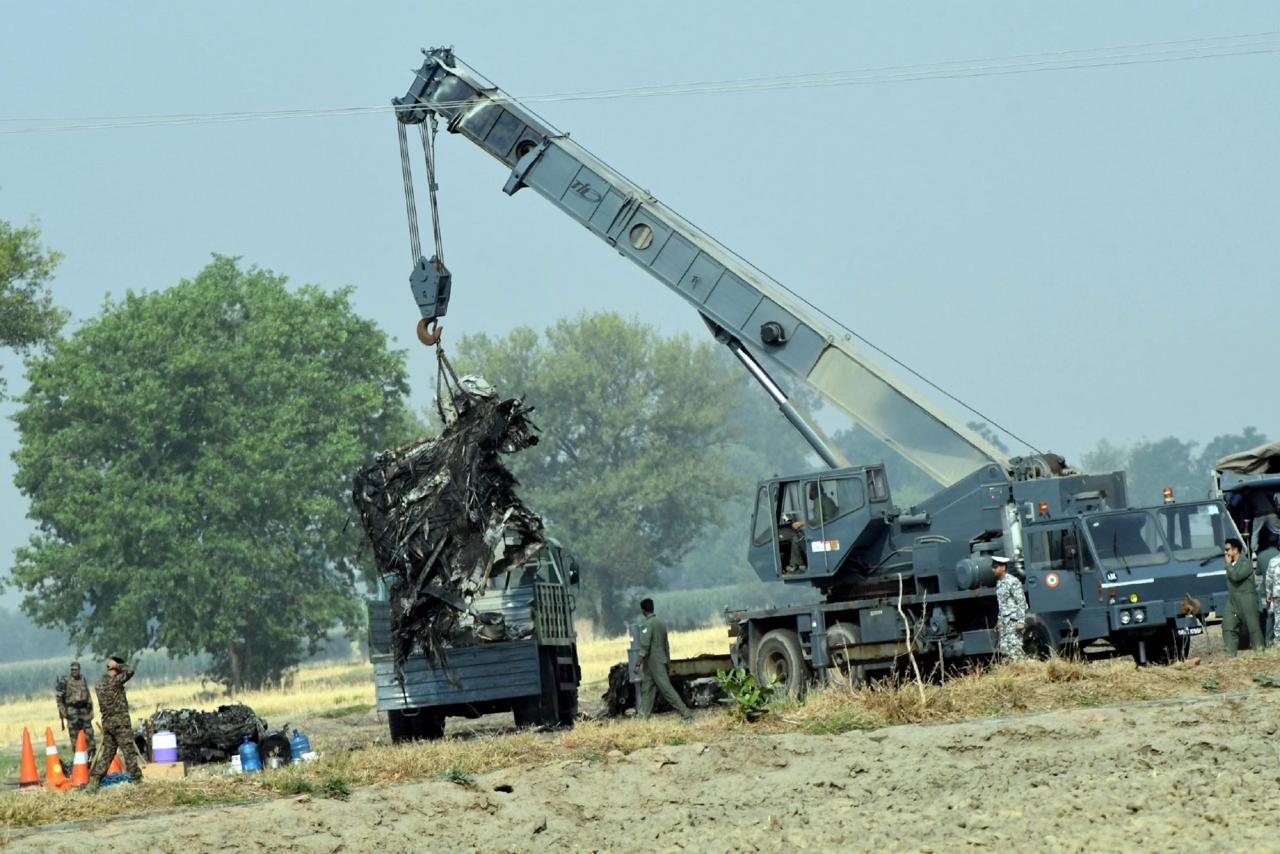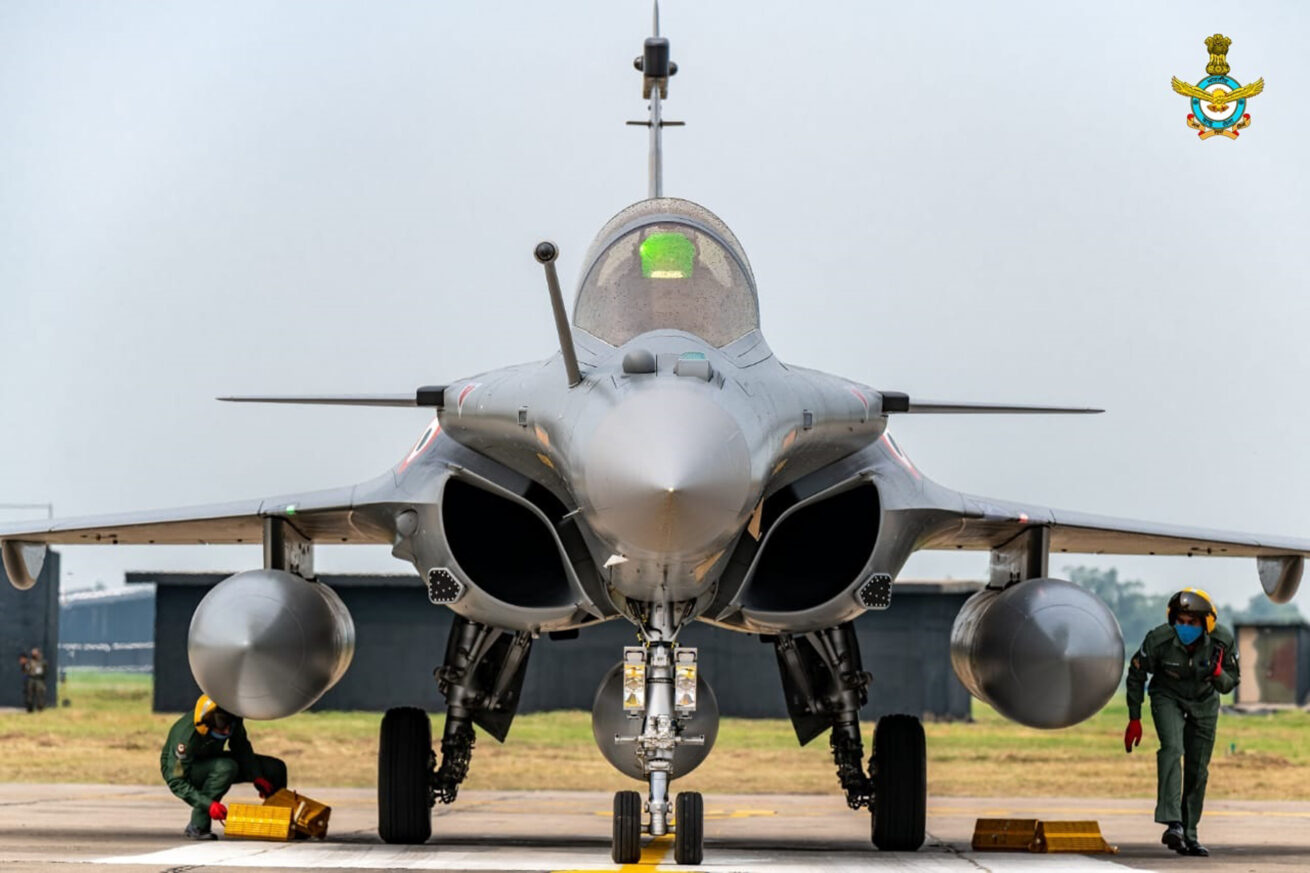India Admits IAF Jet Losses to Pakistan: Defence Attaché Confirms Operational Setback
Speaking at a closed-door regional seminar titled “Analysis of the Pakistan–India Air Battle and Indonesia’s Anticipatory Strategies from the Perspective of Air Power”, organised by Universitas Dirgantara Marsekal Suryadarma on June 10, Captain Kumar laid bare an uncomfortable truth that had until now been shrouded in official ambiguity.
(DEFENCE SECURITY ASIA) — In a candid admission that has sent ripples through India’s defence and strategic community, Captain (Indian Navy) Shiv Kumar, India’s Defence Attaché to Indonesia, has openly acknowledged that the Indian Air Force (IAF) suffered the loss of several fighter aircraft during a high-stakes air operation against Pakistan on the night of May 7, 2025.
Speaking at a closed-door regional seminar titled “Analysis of the Pakistan–India Air Battle and Indonesia’s Anticipatory Strategies from the Perspective of Air Power”, organised by Universitas Dirgantara Marsekal Suryadarma on June 10, Captain Kumar laid bare an uncomfortable truth that had until now been shrouded in official ambiguity.
In his precise words, the veteran officer conceded, “I may not agree that we lost so many aircraft, but I do agree we did lose some aircraft.”
However, slides presented during the seminar indicated that the Air Force lost three Rafale fighter jets, one Su-30MKI, and one MiG-29.
His statement, made during a 35-minute presentation to Indonesian defence academics and air force officers, confirmed what regional observers had suspected — that the IAF paid a real price during its risky cross-border strike targeting Pakistan’s terror-linked infrastructure.
The May 7 operation was part of a broader Indian response to mounting intelligence on militant networks across the Line of Control, but few outside the classified circles knew how costly the opening salvos were.
According to Captain Kumar, the IAF’s losses were not a result of technical inferiority or pilot incompetence but stemmed directly from political constraints imposed by India’s civilian leadership.
He stressed, “The Indian Air Force lost fighter jets to Pakistan on the night of May 7, 2025 only because of the constraint given by the political leadership to not attack the military establishment or their air defenses.”

This stark admission has reignited debate in New Delhi’s strategic corridors over the perennial tension between political caution and operational necessity — especially when dealing with an adversary like Pakistan, which has repeatedly demonstrated its willingness to bend the rules of engagement.
Sources familiar with the air battle confirm that the Modi government’s directives aimed to prevent escalation in a fragile nuclear dyad by restricting IAF strikes solely to non-military terror-linked sites.
This directive, intended to send a political signal to Islamabad while managing escalation risks, left IAF strike packages flying perilously close to hostile airspace with their hands tied.
Pakistan’s response, in contrast, was decisively opportunistic.
According to Pakistani air force insiders, the PAF’s Deputy Chief ordered an immediate transition from deterrence to “destroy” once Indian fighters crossed the line and released ordnance on domestic soil.
While Pakistani officials have boasted of shooting down as many as six Indian fighters, including front-line Rafales, Indian authorities have consistently refused to confirm the precise figure, citing operational secrecy and morale considerations.
The bitter irony is that the IAF’s prized Rafales, acquired from France at an estimated cost of USD 8.7 billion (approximately RM40.8 billion) to counter both Pakistan and China, found themselves boxed in by their own restrictive rules of engagement.

Military analysts point out that in any modern air campaign, suppression of enemy air defences (SEAD) is a non-negotiable prerequisite for securing air superiority.
By deliberately choosing not to target Pakistan’s air defence sites and radar installations, India handed the PAF a golden window to exploit the tactical imbalance.
In a region where both sides maintain robust Integrated Air Defence Networks (IADNs), even a minor lapse in air dominance can be catastrophic.
In an interview with Bloomberg soon after the May engagement, India’s Chief of Defence Staff, General Anil Chauhan, alluded to this operational dilemma, saying, “What is important is that — not the jet being down, but why they were being down.”
Captain Kumar’s remarks confirmed that the IAF quickly drew lessons from the May 7 setback.
Within 72 hours, India’s air planners recalibrated their operational doctrine, lifting the political constraints that had hobbled initial missions.
The new strategy shifted towards classic SEAD and Dead (Destruction of Enemy Air Defences) operations, clearing the way for longer-range stand-off strikes.

“After the loss, we changed our tactics and we went for the military installations,” Kumar explained to his Indonesian audience.
“So we first achieved suppression of enemy air defences and then that’s why all our attacks could easily go through using BrahMos missiles.”
The mention of the BrahMos supersonic cruise missile is telling.
Capable of being launched from multiple platforms, the Indo-Russian BrahMos has a strike range of up to 400km and flies at nearly Mach 3.
It remains a crown jewel in India’s precision-strike arsenal and was deployed extensively in follow-up strikes on Pakistani air bases and logistics hubs on May 10, 2025.
Industry insiders estimate each BrahMos missile costs around USD 3 million (RM14 million) per unit, underlining how expensive stand-off deterrence can be in the subcontinent’s escalating aerial chess game.
The high-octane engagement has rapidly become a case study for other regional air forces, including Indonesia’s TNI-AU, which has historically viewed India’s air power model as a template for modernisation.
During the seminar, Indonesian participants grilled Captain Kumar on how the IAF balanced the political imperative of escalation control with the need for credible deterrence against both Pakistan and an increasingly assertive China.

Geo-strategically, this air clash comes at a time when Beijing and Islamabad have deepened their military-industrial ties, most notably through the continued co-production of the JF-17 Thunder and the potential future acquisition of the stealth J-31/J-35 platform.
Indian analysts fear that any PAF lessons learned in May’s aerial duels could directly feed into Chinese tactical playbooks along the contested Line of Actual Control (LAC).
Equally worrying for New Delhi is the regional echo effect.
Observers in Tokyo, Taipei and Manila have reportedly been briefed by Indian officials on the combat data, recognising parallels with scenarios in the East and South China Seas where political restraints could similarly hamper early air dominance.
Meanwhile, India’s domestic discourse has turned inwards, with military strategists urging that future doctrines prioritise political-military synergy to avoid operational fiascos in crisis scenarios.
For the IAF, the loss of even a handful of fighters is more than just a statistic — it is a wake-up call for an air arm that prides itself on technological overmatch but must operate within the unpredictable corridors of political decision-making.
As India races to induct more Tejas Mk1A squadrons and fast-tracks the AMCA stealth fighter programme, the May 7 losses serve as a brutal reminder that hardware superiority is only as potent as the freedom to use it decisively.


